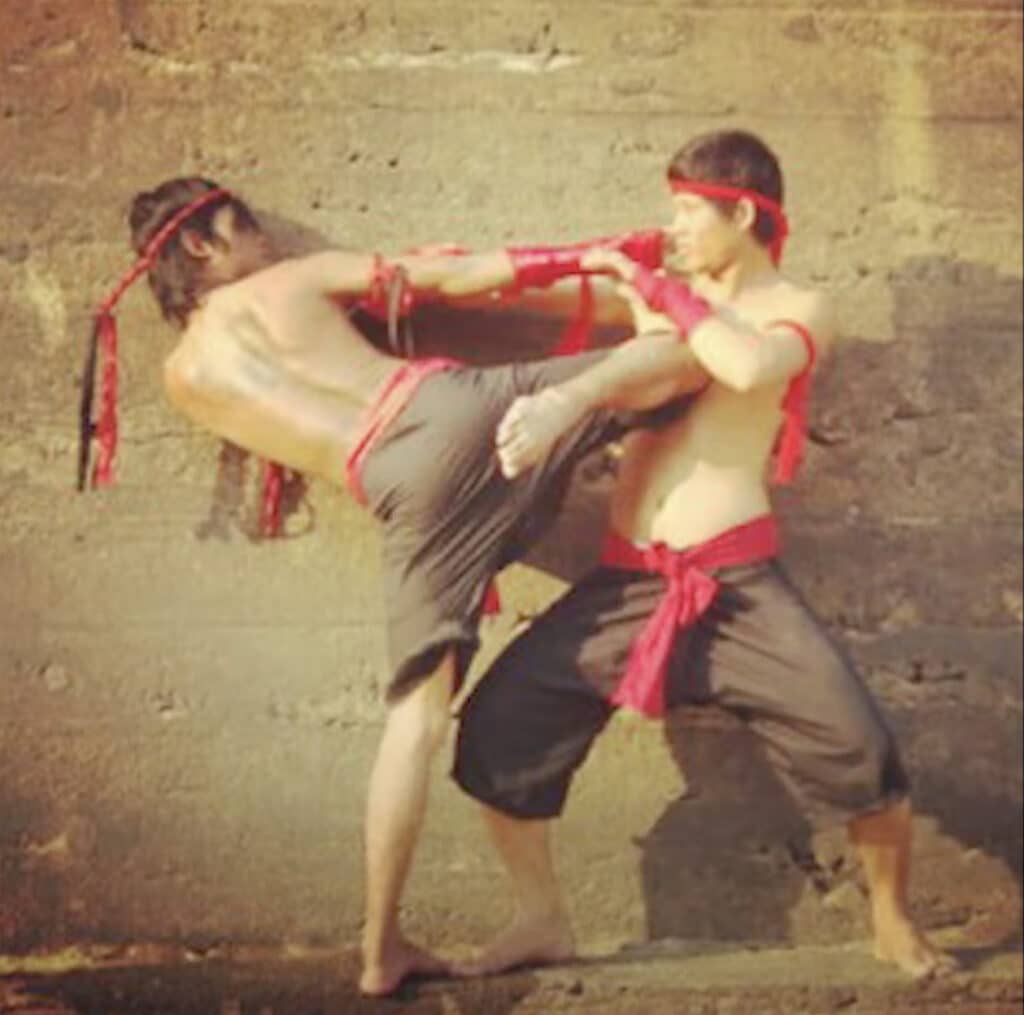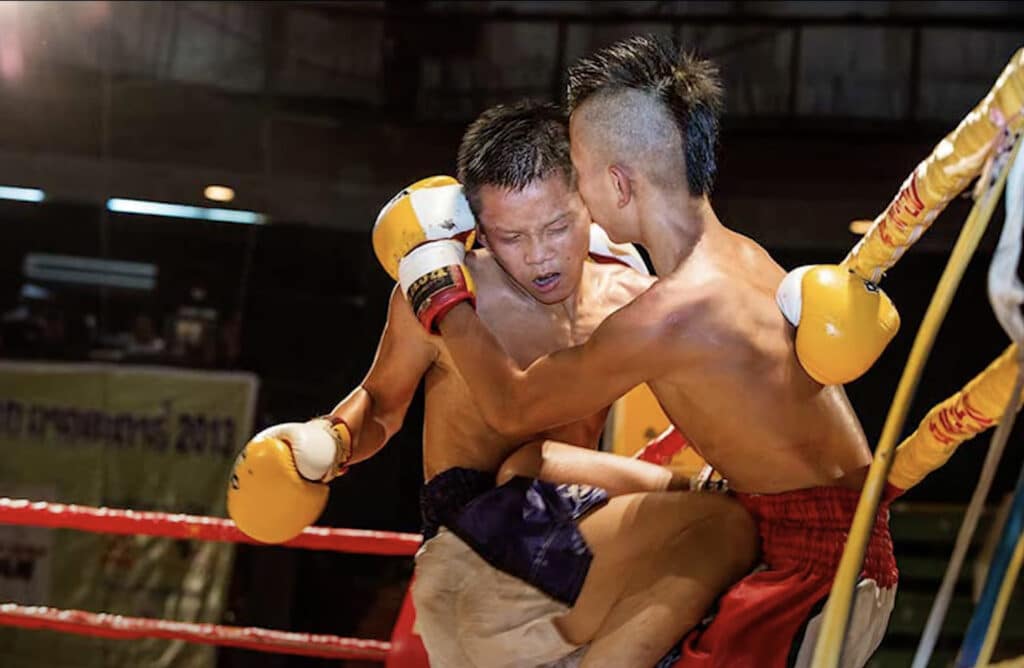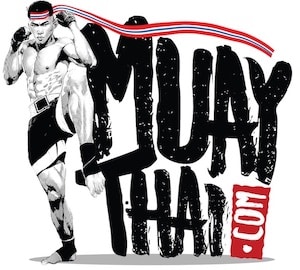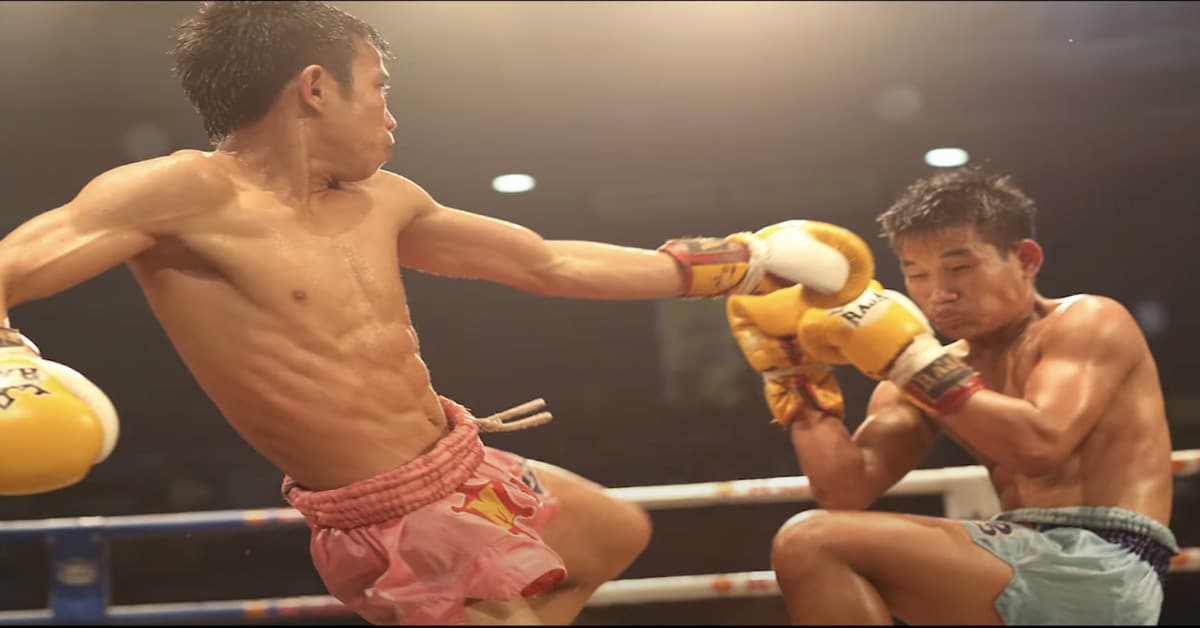What is Muay Lao? Laos’ Hidden Gem
Muay Lao is a martial discipline hailing from the heart of Laos. While it may bear a resemblance to other Southeast Asian martial arts, particularly Muay Thai, it distinguishes itself with its foundational practices.
What is Muay Lao? And is Muay Lao related to Muay Thai? Also, who would win in a fight, Muay Lao or Muay Thai? A reflection of Laotian culture and history, this combat sports martial art form is more than just a sport; it’s a mix of power and heritage. The sport has avid followers as well as fierce competitors still to this day.

What is Muay Lao?
Muay Lao is the traditional kickboxing martial art of Laos. The term “Muay” has its origin in the Sanskrit word “mavya”, which means “boxing”. This martial art has deep historical roots in Southeast Asia, sharing a common ancestry with other traditional kickboxing styles from Southeast Asian countries, such as Muay Thai from Thailand.
Muay?
The history of Muay Lao is interwoven with the broader cultural and historical tapestry of Southeast Asia. While it has been overshadowed by its more internationally renowned counterpart, Muay Thai, Muay Lao has its own unique identity and historical significance.
There’s evidence to suggest that a style akin to kickboxing was practiced by the Khmers during the Angkor era. Given the dominance of the Angkor kingdom over most parts of this region during that period, it’s widely believed that Muay’s origins can be traced back to the early Khmer people.
While Muay Lao is often perceived as the “little brother” of Thai Kickboxing, this may not be historically accurate, as there are alternative theories proposing that Muay Lao might have originated in Northern Thailand. But this is debated fiercely and has no clear conclusion.
Muay Lao very well could be the predecessor to Muay Thai, however, on the global stage, Muay Thai has much more popularity and recognition. The two sports share many techniques.
Muay Lao Today
Despite its rich history, Muay Lao is less developed as a professional sport in Laos compared to Muay Thai in Thailand. Professional Muay Lao bouts in Laos are primarily held in Vientiane, the capital city, and occur about twice a month.
However, the sport is witnessing a resurgence. With the shift in venue from the old Sok Sai stadium to the larger festival and the backing of sponsors like Singha Beer from Thailand, the sport is gaining traction. The festival becomes particularly lively when fighters from neighboring countries like Thailand or Burma will sometimes participate.

Training and Competing
While Muay Lao is popular, its practice is concentrated mainly in and around Vientiane. In remote villages. Temple fighters are still prevalent. These young athletes are trained by family members or friends with some knowledge of Muay Lao.
Training equipment is basic; in the absence of sandbags, banana trees serve as substitutes. These young fighters often compete during Buddhist holidays, with modest cash prizes at stake. However, in areas closer to Vientiane, the Muay Lao scene is more professional, with weekly bouts and prospects of participating in bigger events occasionally.
The Muay Lao training emphasizes the importance of power, precision, and technique in every move. Whether it’s the method of executing a knee strike, the stance for a kick, or the grappling techniques, there’s a clear focus on effectiveness and efficiency.
With more professional kickboxing gyms sprouting in Vientiane and increased sponsorship from major companies, the future of Muay Lao looks promising. There’s a growing belief among Laotians that their fighters will soon match the prowess of Thai boxers. Additionally, there’s a noticeable interest among women in the sport, although professional fights are still dominated by young men.
Muay Lao, like its counterparts, such as Muay Thai, is often referred to as the ‘art of eight limbs’. This is because it utilizes eight points of contact for striking the opponent: punches, kicks, elbows, and knee strikes.
Clinching techniques are also a vital part of the martial art. Historically, Muay was seen as brutal and uncivilized during the colonial period in Southeast Asia. However, with the introduction of timed rounds, boxing rings, and Western-style boxing gloves, the sport became more structured. Plus, it’s a very exciting sport as Muay Lao remains a full-contact sport, with many bouts ending in knockouts.
Muay Lao fighters will frequently cross the border to Thailand to compete in Muay Thai. The prize money in Muay Thai tends to be much higher on average when compared to Muay Lao. The two sports are quite similar, due to history, but right now Muay Thai is a force.
Muay Lao in the SEA Games
The SEA Games, or the Southeast Asian Games, is a biennial multi-sport event involving participants from the countries of Southeast Asia. The member countries participating in the SEA Games are Brunei, Cambodia, Indonesia, Laos, Malaysia, Myanmar, the Philippines, Singapore, Thailand, Timor-Leste, and Vietnam.
The SEA Games features a mix of Olympic sports and sports that are indigenous or particularly popular in Southeast Asia, such as sepak takraw, pencak silat, and dragon boat racing.
In 2009, Muay Lao was a sport in the SEA Games as Laos was hosting that year. Overall, Laos took home nine medals in the sport including five gold medals. Meanwhile, Thailand participated as well and also took home nine medals but managed to capture six gold medals.
Laos and Thailand History
Laos and Thailand share many cultural roots, and therefore Muay Lao and Muay Thai likely began at the same origin point. The history between Thailand and Laos is complex and spans many centuries. The Khmer Empire, with its heartland in present-day Cambodia, was a dominant force in the region for several centuries and exerted its influence over parts of both modern-day Thailand and Laos. Some of the early city-states in the region paid tribute to the Khmer rulers.
In the 14th century, the Lao kingdom of Lan Xang was founded by Fa Ngum, with its capital at Luang Prabang. It would become one of the major kingdoms in Southeast Asia. Meanwhile, to the south, the Kingdom of Ayutthaya, in present-day Thailand, was also rising to prominence. Over the next few centuries, both kingdoms would engage in various conflicts and diplomatic exchanges.
By the late 18th century, strife and Burmese invasions had fragmented Lan Xang into three separate kingdoms: Vientiane, Luang Prabang, and Champasak. During this period, the Siamese, Thai, kingdom, having emerged victorious against the Burmese began to exert its influence over these Lao territories.
Throughout the 19th century, Siam annexed large parts of Lao territory, particularly after the Laotian rebellion (1826-1828) against Siamese rule. By the late 19th century, most of the Lao territories were under Siamese suzerainty.
In the late 19th and early 20th centuries, through a series of treaties, Siam ceded its territories east of the Mekong River to French Indochina, solidifying the modern boundary between Laos and Thailand. Consequently, Laos became a French protectorate until it gained independence in 1953.
Culture between Laos and Thailand
Thailand and Laos share deep cultural roots, influenced by their shared history, geography, and ethnic ties. Their cultural relationship is evident in various domains, including language, religion, customs, and arts.
The Thai and Lao languages both belong to the Tai-Kadai language family, making them closely related. As a result, speakers of one language can often understand the other, although there are distinct regional dialects and differences in vocabulary and pronunciation. Additionally, their scripts are similar, both having been influenced by the ancient Indian Brahmi script. However, over time, each has developed unique characteristics, making written Thai and Lao distinct yet visually similar.
Theravada Buddhism is the predominant religion in both Thailand and Laos. This shared spiritual foundation profoundly influences their cultural practices, festivals, and daily life. Temples (or ‘wats’) are central to community life in both countries.
Shared historical narratives and folklore tales are prevalent between the two countries. Stories about legendary heroes, spirits, and mythical creatures are passed down through generations in both Thai and Laotian cultures. Some tales, like those of the Naga serpent, are deeply embedded in the cultural psyche of both nations.
A Quick History of Muay Thai
To understand Muay Lao, it would be wise to understand the history of Muay Thai. These two nations share so much history. The origins of Muay Thai can be traced back to the migrations of the Tai people from southern China to Southeast Asia between the 10th and 14th centuries. These early tribes practiced various forms of unarmed combat, which over time evolved into what we recognize today as Muay Thai and Muay Lao.
Before it became known as Muay Thai, the martial art was referred to as “Muay Boran,” which translates to “ancient boxing.” Muay Boran was a combat skill used in warfare and was also a popular sport in various regions of Thailand, each with its distinct style. These regional variations included Muay Chaiya, Muay Korat, and Muay Lopburi, among others.
Conclusion
Muay Lao represents the martial traditions of Laos, combining age-old practices with modern-day developments. While there are striking resemblances to its more popular brother, Muay Thai, Muay Lao has carved out a distinct identity. Even though it hasn’t achieved the global limelight as some other martial arts, Muay Lao remains a beloved symbol of Laotian culture, showcasing their, historical significance, and love for combat sports.

